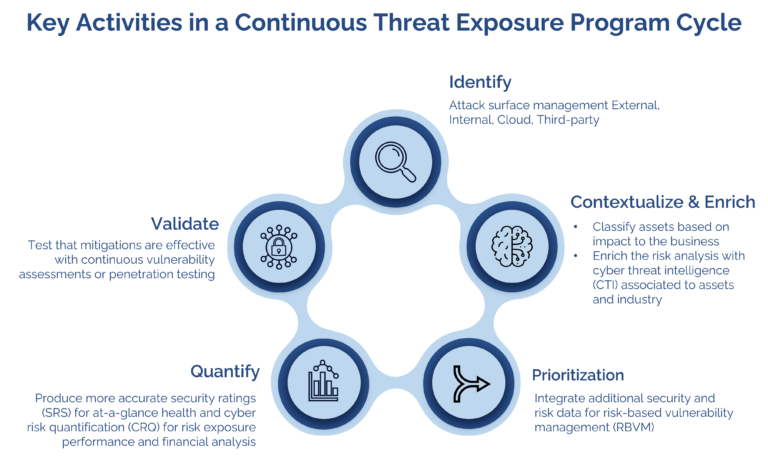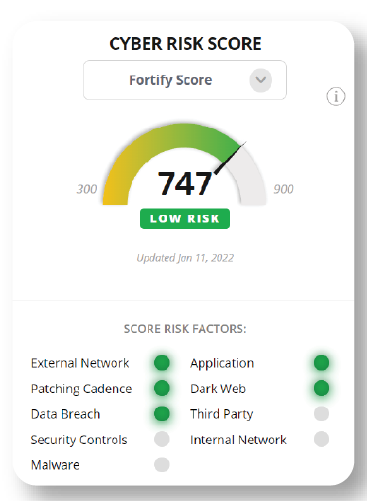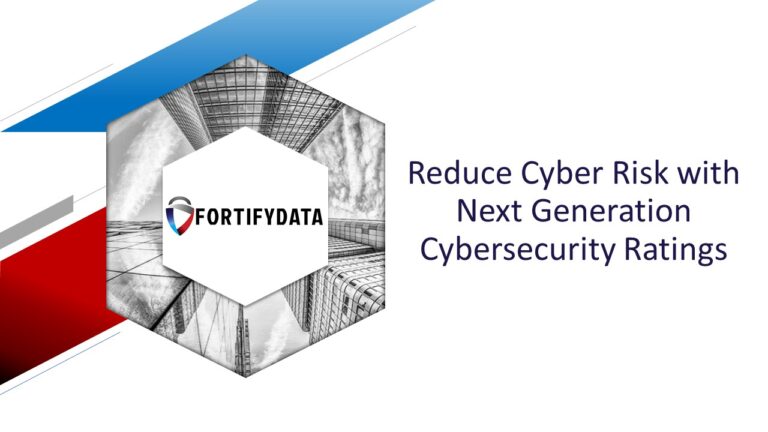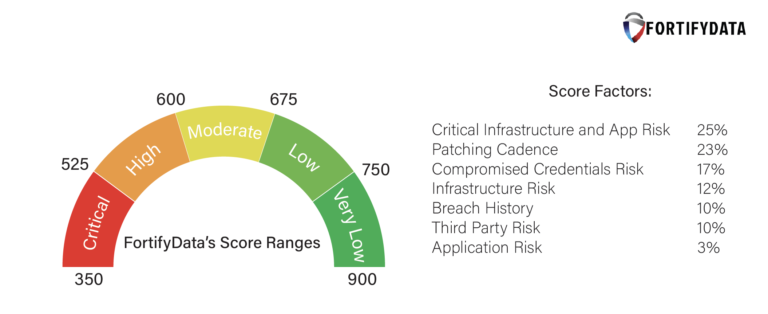
Continuous Threat Exposure Management – The 6 Aspects You’ll Need to Address Continuous Threat Exposure Management (CTEM) is an…
"This is an excellent starting point for any organization that wants to get serious about their cyber risk management. The system has the capability to grow as you become more sophisticated in your use"
IT Director
Services Industry
Cybersecurity ratings play an important role in assessing the cyber health of organizations by providing an objective measure of an organization’s cybersecurity posture, helping businesses make informed decisions about partnerships, investments, and more. However, different rating providers have distinct security rating scales and methodologies. Let’s delve into what constitutes a good rating across various platforms and some suggestions if your security rating is low or inaccurate.
A security rating scale is a standardized metric used by cybersecurity rating providers to assess and communicate an organization’s cybersecurity risk posture. The scale typically ranges from numerical values or alphabetic grades, with higher scores or grades indicating better cybersecurity practices and lower risk. The purpose of these scales is to provide a clear, objective, and consistent way to evaluate and compare the cybersecurity health of different entities.

Additional Resources
Context based security ratings
Cybersecurity rating scale explained
What are security ratings used for?
How are security ratings created?
How do you improve your security rating?
Is it easy to switch security ratings providers?
Why is my security rating wrong?
What Kind of Company is BitSight?
Select What are the 5 C’s of Cybersecurity?
What is the Highest Security Rating?
What is the difference between SecurityScorecard and BitSight?
The Evolution of Cybersecurity Ratings and How They Can Boost Risk Visibility

The BitSight security rating ranges from 250-900, with a higher number indicating better security posture. BitSight evaluates an organization’s security posture by looking at 4 categories:
SecurityScorecard offers a different measuring scale. Their ratings range from A-F across ten groups of risk factors. These factors include Network Security, DNS Health, Patching Cadence, Endpoint Security, IP Reputation, Application Security, and more. An ‘A’ rating indicates excellent cybersecurity practices, while an ‘F’ suggests significant vulnerabilities. Notably, organizations with an ‘F’ rating have a 7.7x higher likelihood of sustaining a breach compared to those with an ‘A’ rating, as described on their website.

FortifyData’s security ratings scale is from 300-900 points, with a higher score meaning better security posture. The scoring model adheres to the principles of Fair and Accurate Security Ratings set by the U.S. Chamber of Commerce and leverages the NIST Risk Management Framework (RMF) as its base.
A score of 750-900 indicates Very Low Risk, which indicates the unlikely presence of critical cyber risks within an organization’s environment. Conversely, score of 350-525 is Critical Risk, indicating that vast amounts of cybersecurity risks currently present within the company’s resources and/or compromised assets. Continuous monitoring of your threat landscape is always important to identify any changes that may impact your security rating.
FortifyData’s assesses the below risk factors in the cyber security rating calculation:
If your organization receives a low security rating, it’s a call to action. Here are some steps to consider:
If your security rating is incorrect due to false positives or misattributions your rating may fall within an undesired range of the security rating scale, you need to flag those with your security rating provider for an appeal discussion. Solutions like FortifyData allow you to compensate for security controls, and also report any misattributions so that your security rating can be immediately updated on the next assessment, which can be requested at any time.
Misattributions are unfortunately common among many security ratings providers, but FortifyData continuously searches and identifies new assets, and validates identified assets, ensuring a more accurate representation of an organization’s security posture.
A good cybersecurity rating not only boosts an organization’s reputation but also ensures that it is based on accurate and comprehensive data. Understanding the security rating scales of different providers and the factors they consider can help organizations stay ahead in the cybersecurity game.



| Cookie | Duration | Description |
|---|---|---|
| cookielawinfo-checkbox-analytics | 11 months | This cookie is set by GDPR Cookie Consent plugin. The cookie is used to store the user consent for the cookies in the category "Analytics". |
| cookielawinfo-checkbox-functional | 11 months | The cookie is set by GDPR cookie consent to record the user consent for the cookies in the category "Functional". |
| cookielawinfo-checkbox-necessary | 11 months | This cookie is set by GDPR Cookie Consent plugin. The cookies is used to store the user consent for the cookies in the category "Necessary". |
| cookielawinfo-checkbox-others | 11 months | This cookie is set by GDPR Cookie Consent plugin. The cookie is used to store the user consent for the cookies in the category "Other. |
| cookielawinfo-checkbox-performance | 11 months | This cookie is set by GDPR Cookie Consent plugin. The cookie is used to store the user consent for the cookies in the category "Performance". |
| viewed_cookie_policy | 11 months | The cookie is set by the GDPR Cookie Consent plugin and is used to store whether or not user has consented to the use of cookies. It does not store any personal data. |